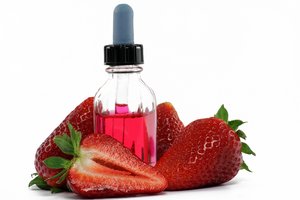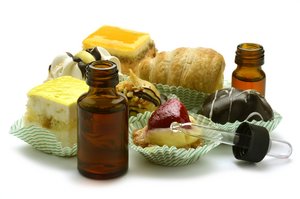Without artificial flavouring

In the European Union and in Switzerland, natural flavouring is the term used to describe a flavouring substance or a mixture of flavouring substances which is obtained from source materials of plant or animal origin by means of appropriate physical, enzymatic or microbiological processes and which is chemically identical to flavouring substances occurring in nature. The term may only be used "if the flavouring component is derived from different source materials and naming the source materials would not accurately describe their aroma or flavour."[1][2]
Until the beginning of 2011, the EU also used the terms nature-identical flavouring and artificial flavouring.[3] Nature-identical was the term used to describe a flavouring that is chemically identical to substances found in nature, but which has been chemically synthesised. Artificial was the term used to describe flavourings that are artificially produced and do not occur in nature. According to the EU Flavour Regulation adopted in 2008,[1] the labels "nature-identical" and "artificial" have no longer been used since 20 January 2011.[4]

In a narrower sense, natural flavourings obtained by purely physical processes from the foodstuffs or spices concerned and not chemically modified, e.g. strawberry flavouring from strawberries or vanilla flavouring from vanilla beans, may be called "natural strawberry flavouring" or "natural vanilla flavouring". Alternatively, "vanilla extract" is also common in such cases. In the case of flavourings labelled as "natural" without indication of their origin, it must be assumed that they have been produced biotechnologically from other raw materials, i.e. using bacteria, fungi or enzymes. For example, mould cultures can be used to produce flavourings that taste like peach, coconut or nut, and natural raspberry-flavoured flavourings are usually produced from cedar wood oil.[5] Vanillin can be declared as a natural flavouring if it has been produced by genetic engineering, whereas when it is usually produced from waste from pulp extraction (sulphite liquor) or from petroleum, it used to be classified as nature-identical and is now simply declared as a flavouring without further labelling.
Critics such as the consumer centres and the German Additive Museum consider the labelling of food with clean labels such as "without artificial flavourings" to be misleading, since artificial flavourings may only be used in very few product groups anyway and many consumers imagine "natural" flavourings to be something other than what is actually contained in the product.[6]
Einzelnachweiße
[1] Verordnung (EG) Nr. 1334/2008 … über Aromen… zur Verwendung in und auf Lebensmitteln, retrieved on 13. Juli 2013. See also Konsolidierte Fassung vom 22. April 2013 (PDF)
[2] Schweizer Aromenverordnung von 2016, Art. 10e.
[3] Richtlinie 88/388/EWG des Rates… über Aromen zur Verwendung in Lebensmitteln und über Ausgangsstoffe für ihre Herstellung vom 22. Juni 1988 (PDF)
[4] Kommentar zur neuen Aromenverordnung (Memento des Originals vom 2. Dezember 2010 im Internet Archive)
[5] Lexikon der Zusatzstoffe: Natürliche Aromastoffe (Memento des Originals vom 8. Dezember 2015 im Internet Archive)
[6] Stern: So künstlich sind natürliche Aromen. 22. August 2015.
